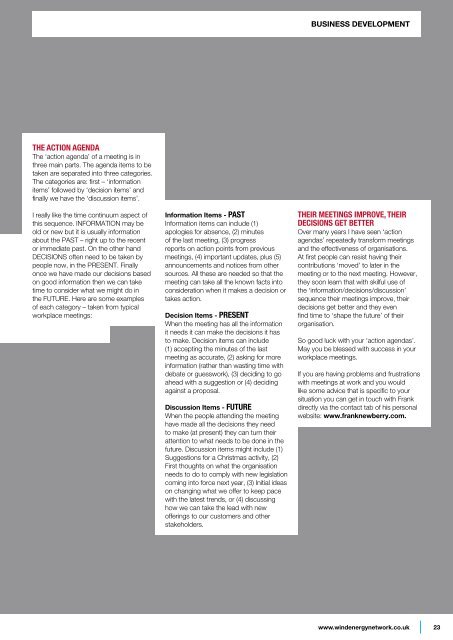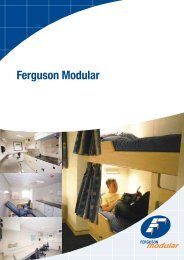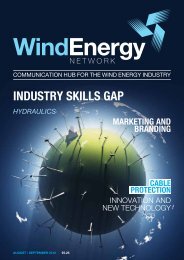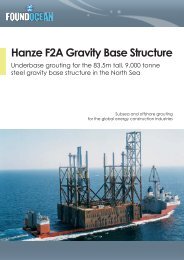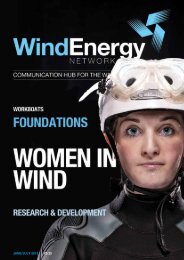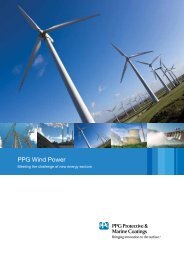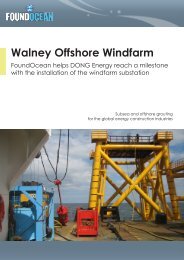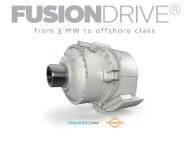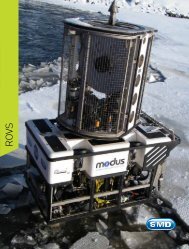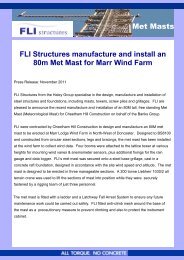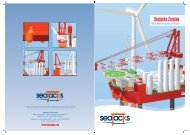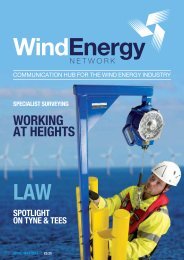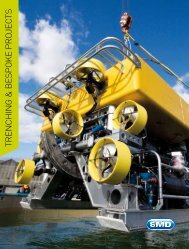UNEXPLODED ORDNANCE - Wind Energy Network
UNEXPLODED ORDNANCE - Wind Energy Network
UNEXPLODED ORDNANCE - Wind Energy Network
Create successful ePaper yourself
Turn your PDF publications into a flip-book with our unique Google optimized e-Paper software.
BUSINESS DEVELOPMENT<br />
The Action Agenda<br />
The ‘action agenda’ of a meeting is in<br />
three main parts. The agenda items to be<br />
taken are separated into three categories.<br />
The categories are: first – ‘information<br />
items’ followed by ‘decision items’ and<br />
finally we have the ‘discussion items’.<br />
I really like the time continuum aspect of<br />
this sequence. INFORMATION may be<br />
old or new but it is usually information<br />
about the PAST – right up to the recent<br />
or immediate past. On the other hand<br />
DECISIONS often need to be taken by<br />
people now, in the PRESENT. Finally<br />
once we have made our decisions based<br />
on good information then we can take<br />
time to consider what we might do in<br />
the FUTURE. Here are some examples<br />
of each category – taken from typical<br />
workplace meetings:<br />
Information Items - PAST<br />
Information items can include (1)<br />
apologies for absence, (2) minutes<br />
of the last meeting, (3) progress<br />
reports on action points from previous<br />
meetings, (4) important updates, plus (5)<br />
announcements and notices from other<br />
sources. All these are needed so that the<br />
meeting can take all the known facts into<br />
consideration when it makes a decision or<br />
takes action.<br />
Decision Items - PRESENT<br />
When the meeting has all the information<br />
it needs it can make the decisions it has<br />
to make. Decision items can include<br />
(1) accepting the minutes of the last<br />
meeting as accurate, (2) asking for more<br />
information (rather than wasting time with<br />
debate or guesswork), (3) deciding to go<br />
ahead with a suggestion or (4) deciding<br />
against a proposal.<br />
Discussion Items - FUTURE<br />
When the people attending the meeting<br />
have made all the decisions they need<br />
to make (at present) they can turn their<br />
attention to what needs to be done in the<br />
future. Discussion items might include (1)<br />
Suggestions for a Christmas activity, (2)<br />
First thoughts on what the organisation<br />
needs to do to comply with new legislation<br />
coming into force next year, (3) Initial ideas<br />
on changing what we offer to keep pace<br />
with the latest trends, or (4) discussing<br />
how we can take the lead with new<br />
offerings to our customers and other<br />
stakeholders.<br />
Their meetings improve, their<br />
decisions get better<br />
Over many years I have seen ‘action<br />
agendas’ repeatedly transform meetings<br />
and the effectiveness of organisations.<br />
At first people can resist having their<br />
contributions ‘moved’ to later in the<br />
meeting or to the next meeting. However,<br />
they soon learn that with skilful use of<br />
the ‘information/decisions/discussion’<br />
sequence their meetings improve, their<br />
decisions get better and they even<br />
find time to ‘shape the future’ of their<br />
organisation.<br />
So good luck with your ‘action agendas’.<br />
May you be blessed with success in your<br />
workplace meetings.<br />
If you are having problems and frustrations<br />
with meetings at work and you would<br />
like some advice that is specific to your<br />
situation you can get in touch with Frank<br />
directly via the contact tab of his personal<br />
website: www.franknewberry.com.<br />
www.windenergynetwork.co.uk<br />
23


